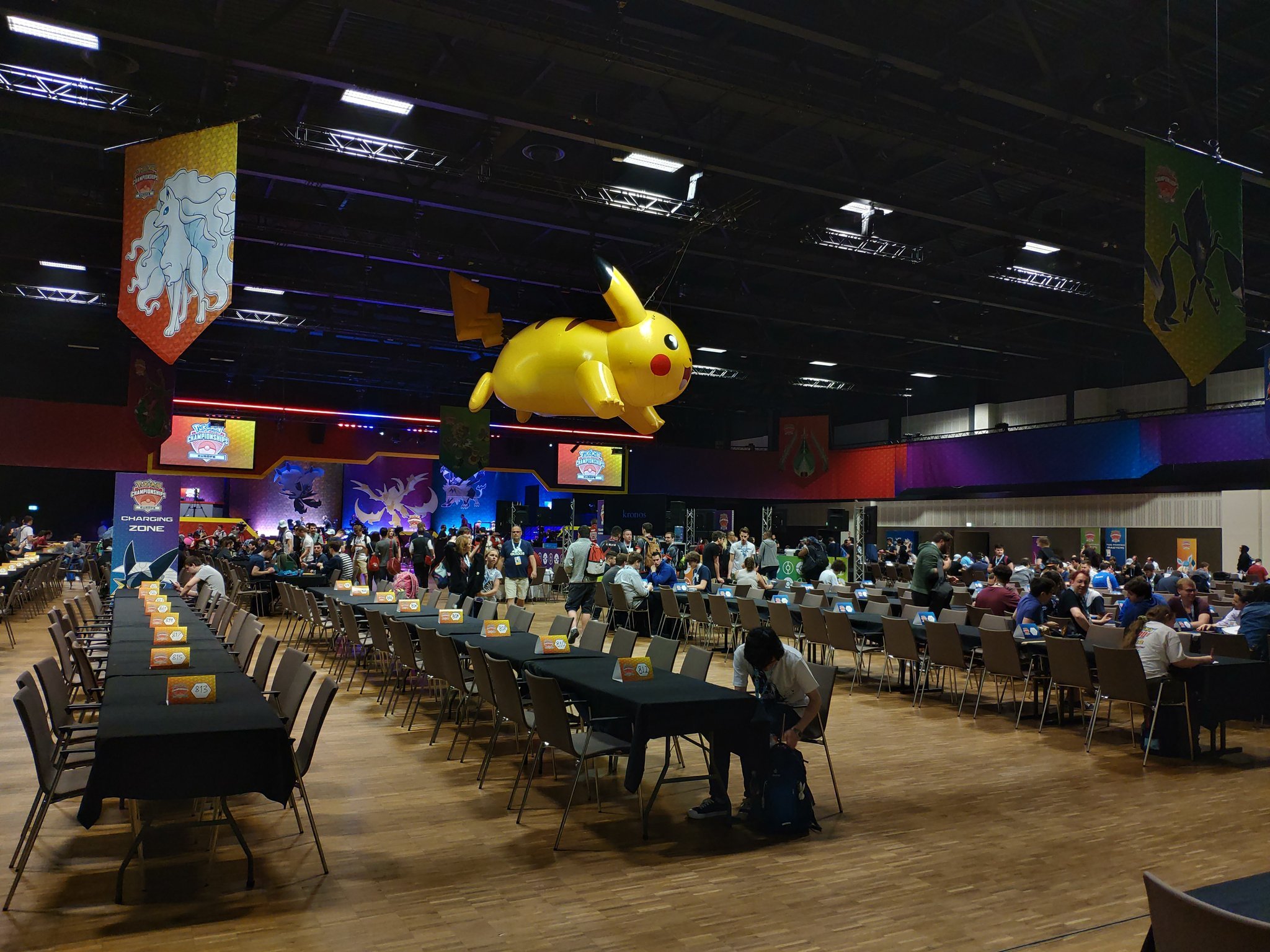
Attending Regionals
8min 54sec read
Written by Aaron Traylor
What is it like to attend a Regional?
Regionals are large in-person tournaments held over a whole weekend. They offer steep competition and can be a lot of fun. If competition isn’t your thing, there are plenty of activities for spectators as well. To find a list of Regionals in your area, click here.
If you have any questions while you're at the tournament, look for a judge-- they’re easily spotted by their white lab coats. The tournament organizers and judges will make every part of the procedure clear, and you should follow their instructions-- they are the ultimate authority! If you’re playing a battle and need to summon a judge for any reason, put your hand up and wait for a bit.
What do I have to do before attending a Regional?
If you're spectating
If you don't intend to compete, you don't have to do anything except follow the COVID safety guidelines provided by the organizer. Regionals are free for spectators. Check out our spectator's guide below.
If you're competing
Get a POP ID and make a Pokemon Trainer Club account. You’ll need a POP (Pokemon Organized Play) ID and a Pokemon Trainer Club account to play in the tournament, earn prizes from it, and obtain Championship Points for qualifying to Worlds. Here's how you get started. The POP ID is a number that uniquely identifies you within their system. You probably shouldn't give it out to anyone other than tournament organizers.
Register online. You’ll need a POP ID to register for the tournament. You’ll also have to pay the entry fee ahead of time. Entry fees can be steep, and might run you 50 or 60 dollars.
Get the Pokemon that you want.
Travel to the Regional. You can read our guide for estimating travel cost here, and a packing list here. Our preferred time to arrive at the event is midday Friday (the day before the tournament) at the latest-- but you might not be able to avoid a late evening arrival. Our preferred time to plan to leave the Regional is, if driving, midday Sunday at the earliest. If we booked scheduled transportation (e.g. planes/buses), we try to leave Sunday evening at the earliest.
Schedule
All times in this schedule are approximate-- every Regional will be different. Check the website of whatever Regional you attend.
Saturday (Day 1)
Check-in
The first step of the tournament is check-in, which usually lasts until about 8:30 or 9am. You’ll need your registration details, your player ID, and a government ID to corroborate your registration. You’ll also need your Switch and a team sheet. A team sheet is a piece of physical paper outlining every stat, move, item, and ability of your six Pokemon for that tournament. They’ll have some available in line, but you can also fill them out ahead of time. You’ll hand the team sheet in when you register.
When you check in, you’ll probably have to wait in a line with other competitors– make sure it's for the video game. When you reach the front of the line, you’ll meet judges that will help you check in. First, they’ll check your online registration. After that, they’ll take your team sheet and use special software to lock your battle box. What this means is that you won’t be able to swap the Pokemon out of the battle box (accessible by pressing X twice in the PC in Pokemon Sword/Shield) until you cancel your participation in the tournament on your Switch.
After that, you’ll be good to go- hang out until Round 1 begins. We recommend knowing where the judge’s table, water fountain, bathrooms, and outlets are before the tournament begins.
The Tournament (Swiss rounds)
At around 9:30am, the tournament will start. You will be able to check pairings on your phone using the RK9 website, or look for your name on the paper pairings (you’ll be able to spot them by the throng of people crowding around them). You’ll sit down across from your opponent and listen to announcements from the tournament organizer before beginning. Once you’re given the all-clear to start your match, follow the procedure outlined at the table to connect your Switch to your opponent.
You’ll then play a best of three against your opponent. At Regionals, Internationals, and Worlds, your Switch will be plugged in at all times, so don’t worry if it can’t hold a charge well. Once the battles have started, you’re not allowed to use any other electronic devices (if you have a medical concern, talk to a judge beforehand!) It’s okay to use headphones, but they have to be plugged into your Switch. You’re allowed to take notes, but you need to use a clean sheet of paper-- you can’t read off anything written beforehand during the battle. It’s also a good idea not to talk to other players except your opponent during the battles, and if you have to do so, talk quietly-- other players will be concentrating on their own battles.
During your best of three, a judge will come over to leave a match slip by your table. The first player to win two battles will be the winner, and then both players will sign the match slip. The winner will circle “Winner” and then walk up to the judge’s table to hand in the match slip. If there is any error in the match slip, let the judges know as soon as possible.
After the match is complete, wait for the next round. You should be ready at all times for the next round to start, as it will begin once all players have finished their matches. A round usually takes about an hour to finish, but it can take a little less, or more if there is a significant delay. If you finished in two quick games, you’ll probably have a good amount of time to mill about the hall, grab water or a snack, or use the restroom. If you finished in three long games, you might only have a few minutes before the next round, so if you need to get anything or use the restroom, go quickly. There will probably not be a break for lunch, so don’t plan on being able to go out and grab food.
There will probably be between 8 and 10 rounds of Swiss-- to learn more about this tournament format and how this is decided, go to our Swiss technical article here. That means that if Round 1 began at 9:30am, then the day will probably end between 4:30 and 7:30pm, if not later due to slight delays.
At the end of all of the Swiss rounds, the judges will post the standings. The top players will advance to Top Cut the next day: you can read more about how this is determined here. If you didn’t make Top Cut, your tournament is over and you’re free to leave the tournament and Cancel Participation in your game, thus unlocking your battle box. If you did make Top Cut, listen to what the judges say and do not leave the venue until they tell you to. Also, do NOT cancel participation and unlock your box. These steps are important to make sure you know where to be the next day.
This is what the Regionals prizing and Championship Points structure is like.
Going on Stream
One or two highlight matches (usually of players with 0 or 1 losses) will be selected per round for a stream (if there is one). If your match is selected to go on stream, judges will instruct you on what to do, and you should follow their directions.
Dropping
If you for whatever reason decide to finish the tournament early-- maybe you need to drop for a personal reason, or you aren’t having fun anymore-- don’t just walk off! Check with the judge’s table to get a drop slip. This is a piece of paper that you sign to let the tournament staff know that you'll be dropping. If you earned Championship Points, you can still get them if you drop.
Sunday (Day 2)
The Tournament (Top Cut rounds)
At this point, only a few players will remain in the tournament. If you’re spectating at this point, feel free to skip ahead to the spectator section.
Top Cut players should show up at the time that they’re asked to and follow all directions given by the judges. This might involve a little bit of sitting around while the judges hack check all of the Top Cut players.
At this point, losing a best of 3 means that a player is eliminated from the tournament. Play will continue for four or five rounds, with a conclusive final battle that will likely be streamed to a crowd. Expect the finals to wrap up around 3pm, but this is a loose estimate.
Top Cut players should check with the judges once they’re out of the tournament for prizes and to collect contact info to get set up with the cash prize payment system.
Spectating and Non-tournament Activities
For spectators or players who took an early exit from the tournament, there are still plenty of fun things to do at the tournament. You’re free to come and go from the tournament venue-- if you know people playing, they’ll likely be very grateful if you deliver them food.
Watching Games
There will be a stream setup for you to watch that should have a VGC battle going with commentary. Do not look over players’ shoulders to watch games-- this can get you in trouble with a judge. If there are TVs off to the side broadcasting games, these are okay to watch as well. More and more players will also come to watch the games as the tournament continues and more players are eliminated.
Side tournaments
There are often small side tournaments that award prize wall points, which you can exchange at the prize wall for Pokémon-themed merchandise (e.g. cards, plush, et cetera). This area should be clearly marked.
Vendors
There are often vendors selling Pokémon cards and hard-to-find plushies, some of which are imported from Japan. Most of these vendors target trading card game fans, but some are for Pokémon fans in general.
Classic game setups
In recent years, there have been setups of classic Pokemon games such as Pokemon Stadium 2, Pokemon Snap, and Pokemon Colosseum. Grab some friends and play some party minigames!
Creative corner
For young ones, there’s usually an art station with crayons and blank sheets where they can draw Pokemon.
Wrapping Up
Regionals are a lot of fun- enjoy the experience!

